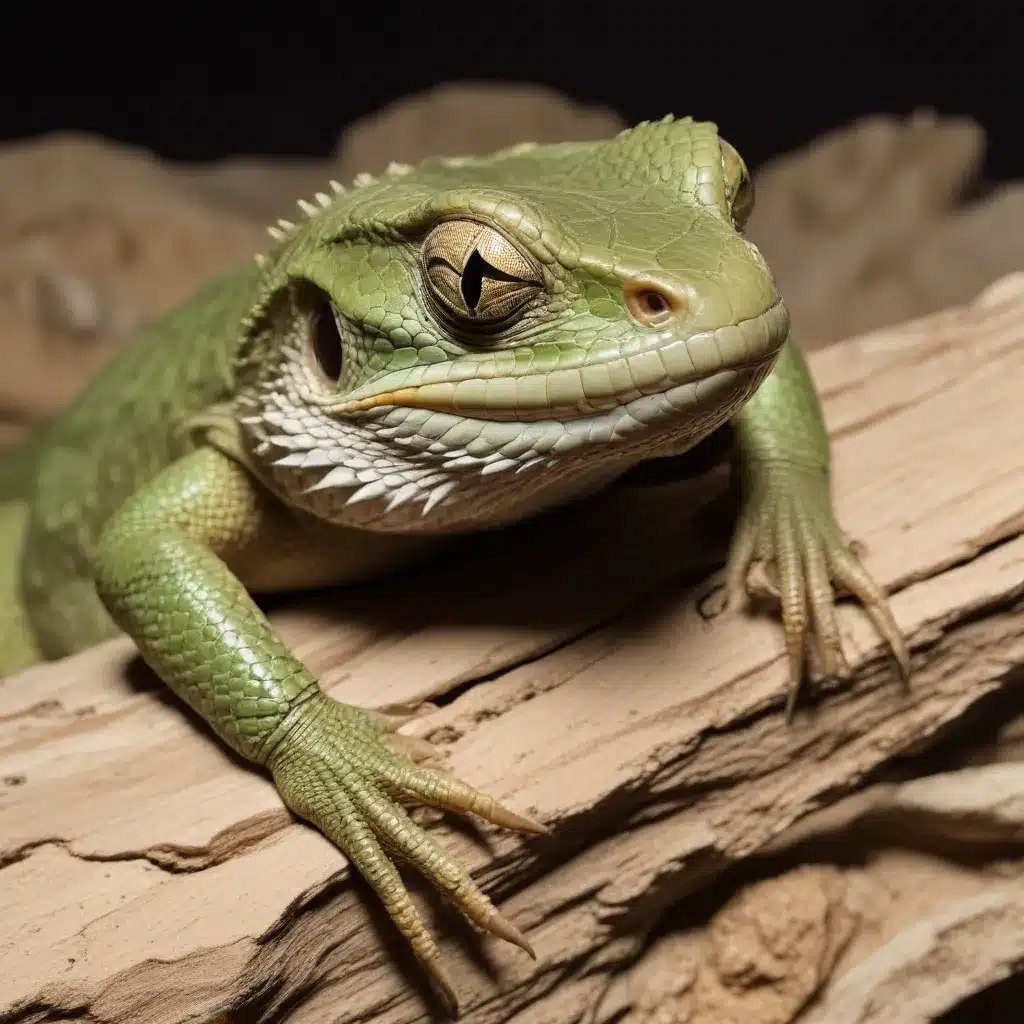
Understanding Reptile Thermoregulation
Reptiles are ectothermic, commonly known as “cold-blooded,” meaning they rely on external sources to regulate their body temperature. This is a crucial aspect of reptile care, as maintaining the right temperature range is essential for their health, behavior, and overall well-being. Reptiles are true sun-worshippers, needing access to appropriate lighting and heat sources to thrive.
When designing an enclosure for a reptile, it’s important to mimic the natural environment the species would experience in the wild. This includes providing a range of temperatures, with a basking area that reaches the ideal temperature for the specific reptile, as well as a cooler area for the reptile to retreat to when needed. Maintaining this thermal gradient is crucial for the reptile’s ability to thermoregulate and maintain physiological functions like digestion, activity levels, and immune response.
Lighting Requirements for Reptiles
Reptiles require specialized lighting to meet their unique needs. Ultraviolet B (UVB) lighting is essential for the synthesis of vitamin D3, which is crucial for calcium metabolism and bone health. Without adequate UVB exposure, reptiles can develop metabolic bone disease, a potentially fatal condition.
The specific UVB lighting requirements can vary depending on the reptile species, but a general recommendation is to provide a UVB bulb that emits 5-10% UVB radiation. These bulbs should be positioned close to the basking area, typically within 12-18 inches of the reptile. It’s important to replace UVB bulbs every 6-12 months, as their output diminishes over time.
In addition to UVB lighting, reptiles also require UVA lighting to support their natural behaviors and visual acuity. UVA wavelengths help regulate the reptile’s circadian rhythm, which is essential for their overall health and well-being.
Maintaining Optimal Temperatures
Ensuring the right temperature range in a reptile’s enclosure is crucial for their health and comfort. The ideal temperature gradient will depend on the specific species, but generally, the basking area should be maintained at 40-48°C (104-118°F), while the cooler end of the enclosure should be around 30°C (86°F). This temperature gradient allows the reptile to regulate its body temperature by moving between the warmer and cooler areas of the enclosure.
To achieve this, it’s recommended to use a combination of overhead heating sources, such as basking lamps or ceramic heaters, and under-tank heating pads or rocks. These heat sources should be carefully monitored and regulated using thermostats and/or dimming devices to maintain the desired temperature range.
Monitoring and Adjusting the Enclosure
Properly setting up and maintaining the temperature and lighting in a reptile enclosure can be a delicate balancing act. To ensure the reptile’s comfort and health, it’s essential to monitor the enclosure’s conditions closely and make adjustments as needed.
Placing at least one thermometer and a dimming thermostat inside the enclosure can help you track the temperature gradient and make necessary adjustments to the heating and lighting sources. It’s also recommended to use a data logging device, such as the EL-WiFi-DTC from Lascar Electronics, to continuously monitor and record the temperature and humidity levels within the enclosure.
This data logging device can be programmed with high and low-temperature alarms, allowing you to receive instant notifications if the enclosure conditions fall outside the optimal range. The live data can be accessed via any internet browser, making it easy to monitor the enclosure’s conditions remotely and make timely adjustments to maintain the ideal environment for your reptile.
Establishing a Proper Day-Night Cycle
Reptiles are predominantly diurnal, meaning they are active during the day and rest at night. Providing a consistent and appropriate day-night cycle is essential for their natural behavior and physiological processes.
During the day, the enclosure should be illuminated with a combination of UVB and UVA lighting, as well as the basking lamp or other heat sources to maintain the desired temperature gradient. At night, the lighting should be turned off, but the heating should be kept on to ensure the temperature does not drop too low.
Using timers to control the lighting and heating cycles can help automate this process and ensure a consistent day-night cycle for your reptile. It’s crucial to avoid sudden changes in lighting and temperature, as this can stress the reptile and disrupt its natural rhythms.
Legal Considerations for Exotic Reptile Ownership
When it comes to owning and breeding exotic reptiles, it’s essential to be aware of the legal requirements and regulations. The specific laws and guidelines can vary widely depending on the location, species, and the intended use of the reptiles (e.g., private ownership, commercial breeding, or selling).
In many regions, certain reptile species may be classified as “exotic” or “endangered,” requiring special permits or licenses for ownership, breeding, and/or sale. Failure to comply with these legal requirements can result in significant fines or even legal penalties.
It’s important to research the relevant laws and regulations in your area before acquiring, breeding, or selling any exotic reptiles. Consulting with local authorities or reputable reptile organizations can help ensure you are operating within the legal framework and avoiding any potential issues.
Conclusion
Providing the right lighting and temperature conditions is crucial for the health and well-being of reptiles. By understanding the specific needs of the species, setting up the enclosure with appropriate heating and lighting sources, and continuously monitoring and adjusting the environment, reptile owners can create a comfortable and thriving habitat for their exotic pets.
Furthermore, it’s essential to be aware of the legal requirements and regulations surrounding the ownership, breeding, and sale of exotic reptiles. Adhering to these guidelines not only ensures the well-being of the reptiles but also helps maintain the responsible and sustainable management of these fascinating creatures.
By prioritizing the reptile’s comfort and safety, and staying informed on the latest best practices and legal considerations, reptile enthusiasts can embark on a rewarding and enriching journey in the world of exotic reptile care and breeding. For those interested in acquiring or learning more about exotic reptiles, be sure to visit exoticreptilesforsale.com to explore the available resources and opportunities.

